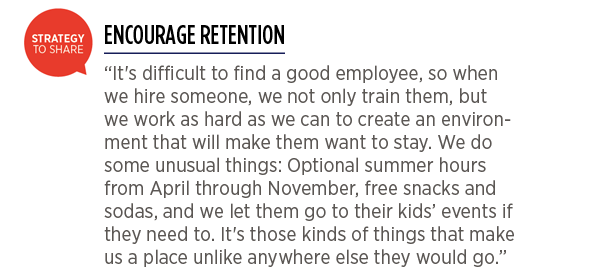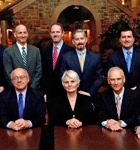When Edgar Higgins bought Thousand Islands Agency from his father-in-law in 1976, he faced a major challenge: how could he turn a small boat insurance agency tucked away in the watery Thousand Islands region of New York into a full-service insurance provider that balanced efficiency and expertise? Profile chats with Higgins about how—since the very beginning—he’s used technology to make his business operate more smoothly, and how even from its small Clayton-area headquarters, Thousand Islands has leveraged its network of agents and providers to offer complete client care.
What kind of agency was Thousand Islands when you first bought it?
Back then, we almost completely did what we call marine insurance for small and large boats. This was back when marine insurance was a specialty line. My father-in-law had a part-time job with a local marina. The marina sold boats, and when people bought one, they needed insurance. He identified that need, and became an expert. Because the business had grown out of a part-time job, most of his client coverage was local.
What was your vision for the company?
I wanted to move toward more diversification. I started out by cold calling for commercial clients in the broader county area. We also needed to find some way of creating an added-value plan model, to give people continuous advice on how to improve the protection of their assets. But in a completely manual environment, we couldn’t be cost-effective. There was no way to provide that model without making a major change in our business. In 1983, I looked at a software program that would automate many processes. After that, we began a direct-mail marketing campaign. That helped us grow the agency 100 percent in 18 months.
You’ve been completely paperless for 10 years. How has this focus on technology helped Thousand Islands grow?
We’re in the information business, and a big thing is how you maximize the speed of retrieving and processing any data that you need. That savings of time can be translated into providing unique value-added services to clients, like an annual review of their policy coverage every year. We can also attract better-quality employees, because employees want a modern work environment. We have three monitors at every workstation, as well as scanners and wireless headsets.
How did buying another company help your growth in the long run?
A friend of mine was near retirement age, and in 2002, I bought his agency. It was bigger than mine, and with its arrival, we could leverage its financial performance but still be independent. Back in 1975, we had three companies we could place policies with. Today, there are up to 15, because we’re much more competitive from a pricing standpoint. It also gave us the leverage to become a member of a larger group of agencies called an insurance cluster. When you’re part of a cluster, you can combine your volume with many agencies, and participate in a profit-sharing agreement based on the aggregate volume of all participating agencies.
What other investments have been crucial to your success?
We’re committed across the board to technical education, so that people are getting the correct answer, the first time, with every inquiry. That does a lot to build client confidence. We’ve also stayed focused on only being willing to insure people properly. That’s created a reputation as being the people who always do it right.


